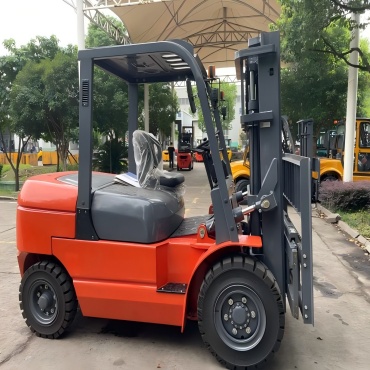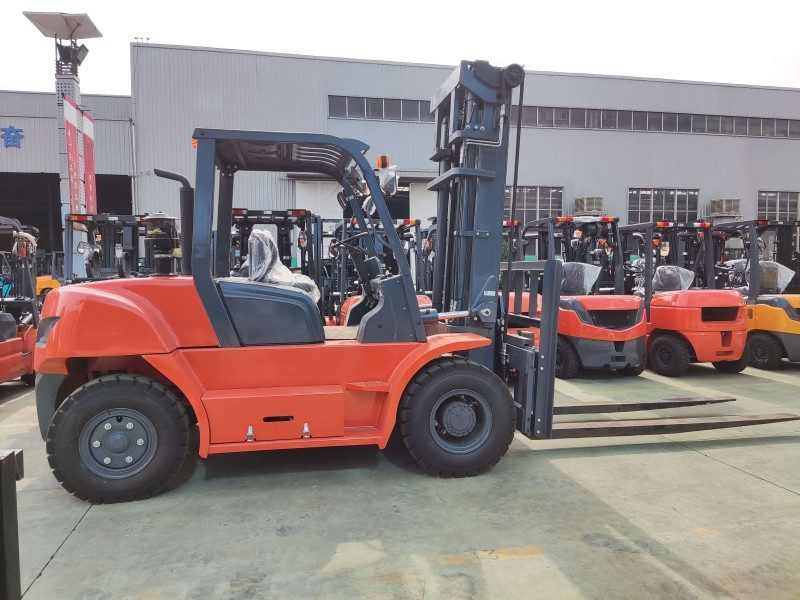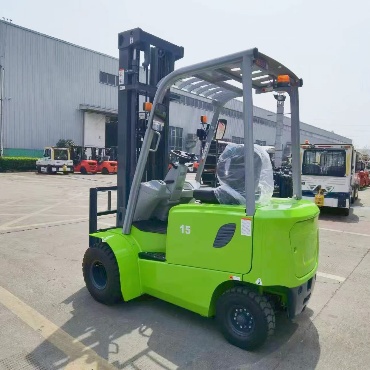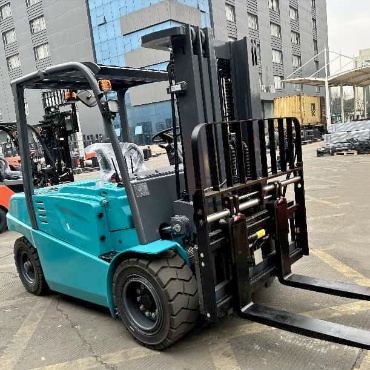- Diesel Forklift
-
- 25-30tonne Diesel Forklift 16T Forklift Truck 4.5 Ton Diesel Forklift 48 Ton Diesel Forklift 3 Ton Diesel Forklift 3.5 Ton Diesel Forklift 2.5 Ton Diesel Forklift 33 Ton Diesel Forklift 15 Ton Diesel Forklift 10 Ton Diesel Forklift 8 Ton Diesel Forklift 4 Ton Diesel Forklift 6Ton Forklift 2 Ton Diesel Forklift 1 Ton Diesel Forklift 1.8 Ton Diesel Forklift 1.5 Ton Diesel Forklift 7 ton forklift 35 ton Forklift Rough Terrain Forklift
- Electric Forklift
-
- Narrow Aisle Stand Up Counterbalance Forklift – High Efficiency Warehouse Solution 3.8ton Low Voltage Lithium Battery Forklift 12t Lithium high capacity forklift 12t large capacity electric forklift 8ton Electric Forklift 10t electric forklift truck 25ton Lithium Battery Forklift 7ton Electric Forklift 16-20t Large Capacity Lithium Battery Forklift 2 Ton Electric Forklift 1.8 Ton Electric Forklift 6 Ton Electric Forklift 1.5 Ton Electric Forklift 1.0-1.5 Ton Electric Forklift 2.5 Ton Electric Forklift 3.5 Ton Electric Forklift 4.0-4.5 Ton Electric Forklift 5 Ton Electric Forklift 3 Ton Electric Forklift 1.6-1.8Ton Three Wheel Electric Forklift 2 Ton three wheel electric forklift
- Rough Terrain Forklift
-
- 3.5t-4ton 4 wheel drive forklift 7 Ton All Rough Terrain Forklift 2-2.5T Rough Terrain Forklift Truck 4 ton off road forklift truck 3t 4 wheel drive forklift for sale 3.5t Two Wheel Drive Rough terrain forklift 3T Diesel Rough Terrain 2WD Forklift FLIFT 3.5ton all rough terrain forklift for sale 2WD 3t off Road Rough Terrain Forklift
- Electric Reach Truck & Pallet Truck / Pallet Stacker
-
- 5ton end rider electric pallet truck with customized 1.8m fork length 10ton-15ton heavy duty electric pallet truck 2.5ton all terrain electric pallet jack 1.5ton-2ton all terrain electric pallet truck with crane jib Counterbalanced Pallet Stacker 1600 lb to 2000 lb Capacity for Indoor Warehouses Heavy Duty 2T-2.5T Electric Stacker Forklift | High-Performance Stacker Lift High-Capacity 2.5t electric reach truck 1.0t -1.5t Electric Walkie Straddle Stacker 2ton Fully Electric Pallet Stacker 3 stage mast 2ton electric rough terrain pallet stacker 1.5ton off road Rough Terrain Stacker 1.8ton walkie Electric Pallet Truck Jack 1.5Ton Electric Pallet Stacker | Durable Walkie Stacker for Easy Material Handling 1200kg walking type electric pallet stacker 2ton roll and reel electric pallet truck Walkie Counterbalanced Stacker 1500–2000kg Capacity Compact Design 1ton outdoor rough terrain counterbalanced pallet stacker 3300lbs Electric off-road pallet stacker 2t Rough Terrain Pallet Truck Powered Pallet Truck with PU Wheels-2000kg Electric Pallet Jack 2t Elecric Hand Truck 1.5 Ton Electric Walkie Pallet Truck – Compact Power for Efficient Material Handling 2 Ton Reach Forklift 1.5 Ton Reach Forklift 2Ton -3Ton Electric Pallet Truck Semi-electric Pallet Stacker 1ton-1.6ton 3 Way Pallet Stacker Multi-Directional Sideloader Forklift 4 direction reach truck
- Customization Forklift
-
- 900kg CDD09B Electric Walking Type Counterweight Stacker Professional Walking Type Electric Stacker with Special Attachment 1ton Electric Outdoor Rough Terrain Telescopic Spreader Stacker 4t QDD40 Seated type Electric Tractor QDD60 Seated Type Fully Electric Tractor 3t QDD30C Electric Tractor with Turning Radius 1545mm 2t CQD20A Electric Simple Type Reach Forklift Truck 1.5t CQD15A Simple Type Electric Reach forklift Truck 5t Convertible Seated Electric Flat Truck 3t CBD30Z Electric Vehicle Transfer Truck 1.5t CDD15Y Electric Pallet Stacker (Rough Terrain) 1t CXD10-45 Electric High Lift-Order Picker 2t CQD20S-60 Four-way Walking Type Reach Forklift Truck CDD10A/15A Walking Type Fully Electric Pallet Stacker 3t QDD30A Standing Type Electric Tractor 1t CSD10 Man Mount Three-way Stacker 1.5t AGV type CDD15J-16 Electric Pallet Stacker CBD80 8t Electric Pallet Stacker 6t CBD60 Electric Pallet Stacker CBD120 1.2t Electric Pallet Stacker 2t CDD20D-30 Walking type Electric Pallet Staccker CDD08B-25 Counterweight Electric Pallet Stacker
- Forklift Attachements
-
- Waste Paper Fixture Fixed Short Arm non-sideshifting non-sideshifting Fixed Short Arm non-sideshifting Non-sideshifting Hinged Forks Caton Clamp Rotator non-Sideshifting Tire Clamps Pusher Turning Fork Clamps non-sideshifting Log Holder Sideshifting Broke Paper Clamps Sideshifting Sideshifting Single Load Stabilizer Fork Positioners Single Double Pallet Handler
How to choose a forklift?
Date: 2020-06-22 View:
When choosing a forklift, the main criteria to consider are load carrying capacity, lift height, motor type, tire composition and operator ergonomics.
There are several types of motors available:
The specificity of the workplace is a decisive factor in choosing the right equipment:
Why use an electric forklift?
Electric forklifts are mainly used indoors.
Advantage:
Cons:
Why use a diesel forklift?
Diesel forklifts have higher operating costs and should be prioritized for outdoor use.
Advantage:
Cons:
Why use a gas forklift?
Gas forklifts use internal combustion engines that use liquid propane gas (LPG) or compressed natural gas (CNG)
Advantage:
Cons:
Should you choose reach or counterbalance?
Balance forklift
Reach Forklift
How to choose from different types of forklifts?
Order Picking: Great for handling, lifting and stacking. Its load capacity is about 1 to 2 tons. The advantages of this forklift include good travel speed and maximum comfort of use. It is only suitable for flat terrain with a maximum slope between 5 and 10%. It is designed to optimize stock picking on both sides of warehouse corridors.
Electric four-wheel balance forklift: The idler wheels of each rear corner are controlled by double-effect hydraulic cylinders. This type of forklift provides greater stability when cornering and is suitable for difficult applications in construction sites and warehouses. Its load capacity varies from 1,000 kg to 3,500 kg. Recommended for heavy lifting applications such as installing machines and tools. However, it can also be used in retail stores, hardware stores and other light industries.
Side Loader Forklift: The first forklift in history designed to handle long loads.
Multidirectional Forklift: It has overthrown the sideload forklift. Operators are able to maneuver long loads with increased precision in all directions.
How to choose the maximum lifting capacity of the forklift?
In order to choose the maximum lift capacity that matches your requirements, you must ask yourself the following questions:
The load type is also important. Specific accessories are designed to increase the capacity of standard forklifts and help you move loads more efficiently. The size of the load determines its application point and the length of the fork. Note that the longer the fork, the lower the lift height.
How to choose the number of wheels?
Three-wheeled forklifts are best for indoor storage, such as in malls or DIY stores, and warehouses with selective storage and high shelves. Four-wheel forklifts are best for moving heavy loads or moving large machines on steep slopes. Their durability on uneven surfaces means they can withstand high-intensity work.
What other criteria should be considered when choosing a forklift?
Forklift driver ergonomics
To make the job less difficult, ideally choose a roomy cab that allows the forklift driver to change positions, ease in and out, and easy movement of the spine and head for better visibility. It is also recommended to avoid vibration, so drive on smooth, unobstructed ground, reduce the speed from 9 km/h to 6 km/h during loading and unloading operations, and use wheels in good condition.
Pneumatic tire
.png)




